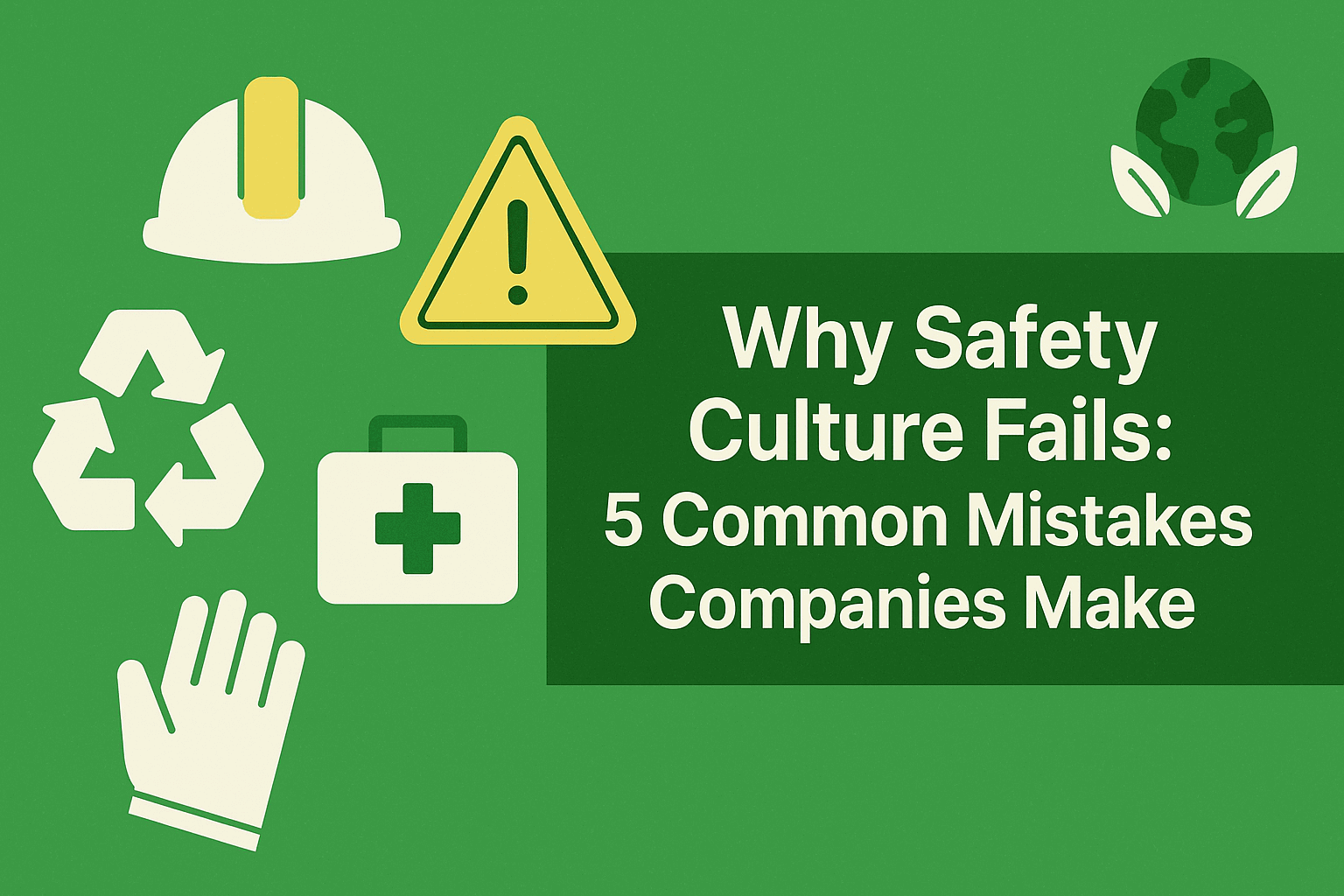Inspirational journeys
Follow the stories of academics and their research expeditions
Why Safety Culture Fails: 5 Common Mistakes Companies Make

???? Why Safety Culture Fails: 5 Common Mistakes Companies Make
Building a strong safety culture isn’t just about paperwork—it’s about people, processes, and priorities. Yet so many organisations stumble along the way. Here are five key mistakes that frequently derail safety culture efforts.
1. Lack of Visible Leadership Commitment
When leadership fails to actively demonstrate commitment—like attending safety walks or participating in training—workers perceive safety as secondary. This “say-do gap” damages trust and engagement.
➡️ Leaders must live safety values visibly—on shop floors, in meetings, and through decisions.
2. Punitive Reporting Systems
If employees fear punishment for reporting incidents, hazards remain hidden. Cases like Boeing and Norfolk Southern illustrate this deeply damaging “culture of silence”.
✅ Encourage reporting through non‑punitive policies and visible follow‑up on concerns.
3. Prioritising Production Over Safety
Rushing jobs or cutting corners sends the message: targets matter more than people. This reinforces “normalisation of deviance”.
⚠️ Process should empower individuals to pause work when safety is compromised—without fear of repercussions.
4. Poor Communication & Learning Loops
Failing to share lessons from near-misses or incidents leaves teams in the dark. Without feedback, mistakes repeat and trust diminishes.
☑️ Embed structured debriefs and learning discussions—don't just "fix and file."
5. Inadequate Resourcing & Training
Safety programs without proper resources—time, skills, budget—inevitably collapse. This systemic neglect sends a clear message: safety isn't valued.
✅ Provide sufficient training, regular refreshers, and allocate time for safe work.
Conclusion: Re-building a Resilient Safety Culture
- Lead visibly: executives on the floor, not just in memos.
- Safe reporting: no blame, no reprisal.
- Balance goals: safety embedded in production metrics.
- Learn fast: regular, open post-incident reviews.
- Invest properly: people, tools, and time matter.
Addressing these errors isn’t quick—but essential. Safety culture thrives when it’s more than rules—it’s living values, everyday practice, and genuine leadership.
0 Comments
Categories
- Health & Safety Culture 7
- Fire Safety & Risk Prevention 4
- Construction & High-Risk Industry Safety 3
- Training & Workforce Development 3
Recent posts
Why Regular HSE Inspections Are Crucial for Compliance?
Wed, 03 Sep 2025




Leave a comment